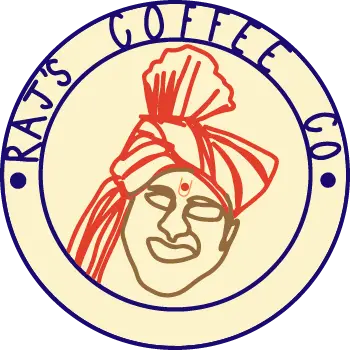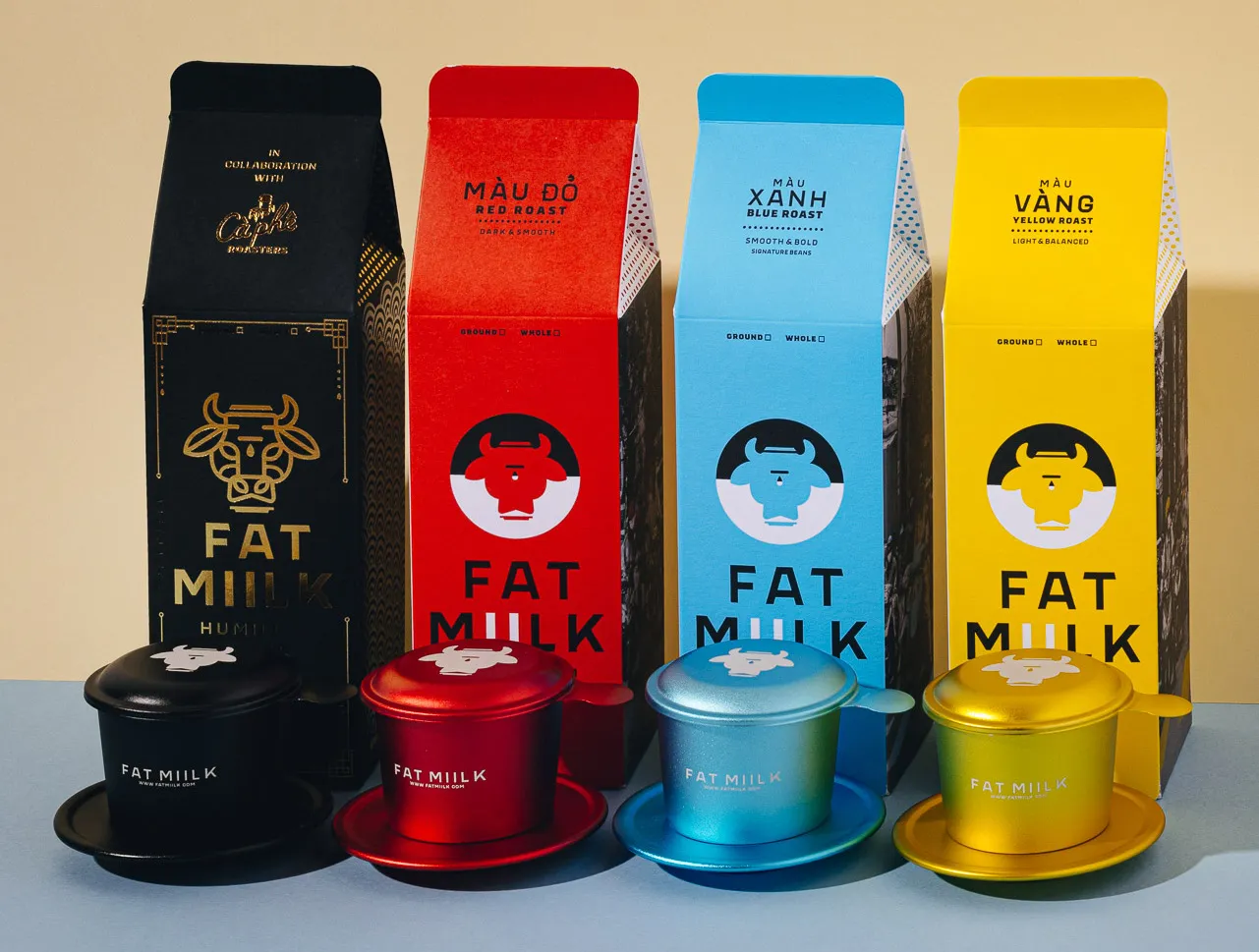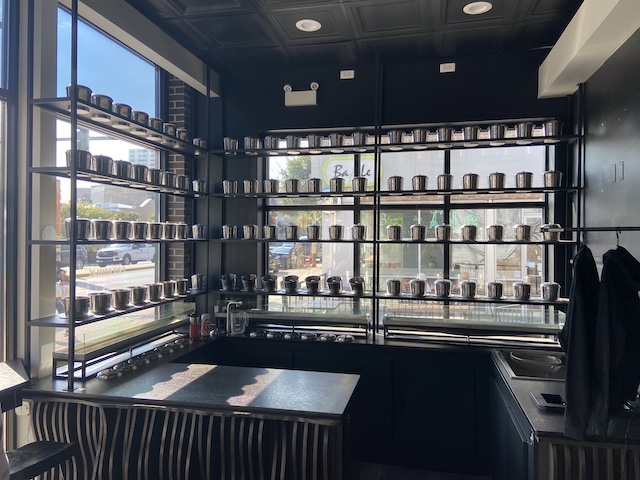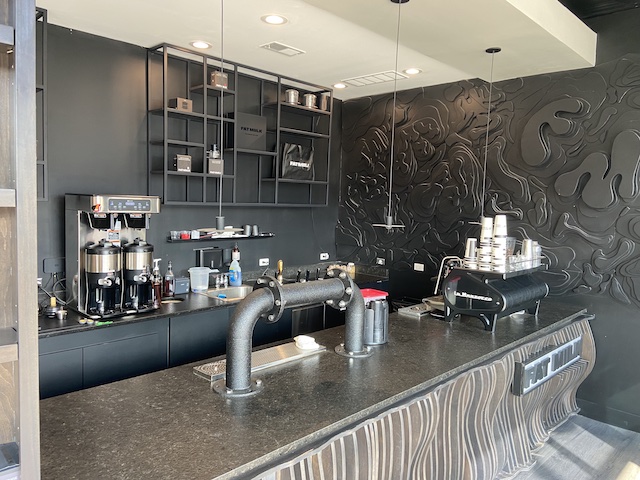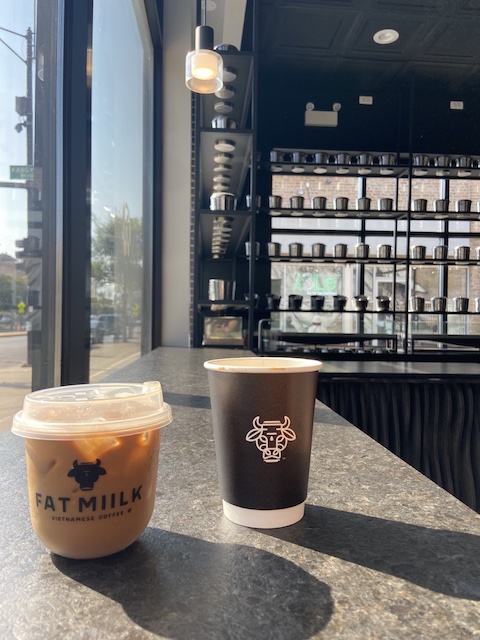In Chicago’s Uptown neighborhood, just off of the city’s Red Line train, you can find the Asia on Argyle district. A whole swath of Asian-American entrepreneurs have started businesses and hosted markets here over the decades. One of the most recent additions to this district is a coffee shop called Fat Miilk.
Originally opened in 2020 as an online-only roaster, founder Lan Ho opened a brick-and-mortar shop in the spring of 2024. Uptown and its surrounding neighborhoods already feature a lot of coffee shops. But what makes Fat Miilk stand out, aside from its emphasis on Vietnamese coffee, is their sourcing. Every bean that Fat Miilk roasts and serves is robusta.
In this article, we’ll delve a little into what robusta is, how it differs from most of the coffee served in the specialty world, and why it’s used in Vietnamese brewing methods. Additionally, we will go through our impressions of Fat Miilk’s product and their brick-and-mortar shop.
Robusta vs. Arabica
Of the many species of the coffea plant, only two are widely cultivated for consumption: coffea arabica and coffea canephora. According to the Specialty Coffee Association, the first, arabica, makes up about 70% of the coffee grown and sold around the world. Coffea canephora, nicknamed robusta, makes up nearly all of the rest.
Until very recently, virtually all of the coffee used in the world of specialty coffee was arabica. This is because arabica produces much tastier cups of coffee than robusta. Being relatively high in acidity and sweetness, arabica has an incredibly wide spectrum of flavor, ranging from floral to tropical fruit to berry, even chocolate notes. Whenever you purchase coffee from a specialty shop, you can bet that the beans are arabica.
Robusta, on the other hand, produces a much narrower spectrum of flavor. And the flavor that it does offer is usually very bold, intense, bitter, and not terribly balanced. Compared to arabica, robusta is low in acidity and sweetness. It can even taste a bit like rubber.
However, robusta has proved its usefulness in the world of commodity coffee (think the sort of coffee you’d purchase in bulk at the supermarket). Unlike arabica, which is more prone to damage from disease and climate, robusta is a heartier crop. It also contains roughly double the caffeine content of arabica and is cheaper to produce. Commodity brands still include some robusta in their blends, partly to offset cost and partly to give their coffee a bold and intense flavor.
It’s also worth nothing two more places where you can find robusta. It has traditionally been used in Italian espresso blends, prized for much the same reasons as in commodity coffee. Also, it is incredibly common for instant coffee to be made from robusta.
Robusta & Vietnamese Coffee
Over the past few years, robusta has gained a slightly stronger foothold in specialty coffee, with more roasters offering robusta in both single-origin batches and blends. The roasters whose profiles have grown for this reason, such as Portland Cà Phê and Fat Miilk, tend to share something in common: their beans come from Vietnam and and their business are Vietnamese-owned. (Interestingly, Portland Cà Phê and Fat Miilk opened at roughly the same time, in the summer of 2020.)
In fact, Vietnam is the largest producer of robusta beans, and many Vietnamese coffee professionals believe that robusta pairs particularly well with Vietnamese brewing methods, such as cà phê sữa đá, or iced coffee. Earlier this year, Vietnamese author and recipe developer Helen Le was quoted in Food & Wine saying, “Robusta may not always get the spotlight on the global stage. But in Vietnam, it’s celebrated for everything it brings to the table: strength, character, and a connection to heritage.”
Lan Ho, the owner of Fat Miilk, also feels strongly about spotlighting the relationship between robusta and Vietnamese coffee. She considers the café to be a place where customers are “able to experience Vietnamese coffee in a lot of different ways.” (Block Club Chicago) This philosophy includes both the coffee menu, all of which is derived from the Vietnamese phin brewing method, and the brew lab in the corner, which is visible from both the inside and outside of the shop.
The Espresso
My first order when I visited Fat Miilk was, like in past visits, an espresso. Their basic double espresso came in a 12 oz paper cup. I do not believe the café offered any ceramic mugs. This espresso, brewed from their light-medium roasted Charisma blend, had an especially foamy crema on top. My guess is that this has something to do with the chemistry of robusta beans, although I couldn’t say for sure.
The flavor of the espresso was, well, very robust. I got some very nice notes of baker’s chocolate, walnut, and rye bread. I couldn’t help but also note a rubbery flavor and texture. To be expected, I suppose. That said, I respect the choice to use robusta beans on a lighter roast profile. I think this was a good idea because it gave the espresso a bit more complexity than what robusta is known for. I found myself enjoying it quite a bit.
The Signature
For my second drink, I chose the Signature Fat Miilk Iced Coffee. This concoction, based on the traditional Vietnamese iced coffee, combined a serving of dark-roasted filter coffee with sweetened, condensed milk.
I first noticed the design of the cup and lid, which are unlike anything I’ve seen before. The body of the cup had a very ergonomic shape, not as angled as the shape of most other cups. The lid had a very small but perfectly shaped opening to sip through. I know this may sound a little weird, but I think this is some of the coolest packaging I’ve seen for any drink in any coffee shop.
The beverage itself was also a delight. The sweetened condensed milk provided such a nice complement to the boldness of the coffee. In fact, I was hard-pressed to find any of the bitter, rubbery notes for which robusta is known. I detected some notes of vanilla and coconut, though I’m sure that was all from the milk.
I would highly recommend trying the signature iced coffee for anyone who visits. It was delicious, came in a delightful cup and lid, and offers a wonderful example of Vietnamese coffee.
Conclusion
Specialty coffee has gone through a lot of unexpected developments in recent years. We’ve seen the growing popularity of specialized home brewing, thanks in no small part to the COVID-19 pandemic. We’ve seen lots of new coffee shops pop up around the world. And we’ve seen the resurgence of robusta in Vietnamese coffee. Fat Miilk has been part of each of these developments, having started as an e-commerce only business in the middle of lockdowns.
And now that their shop is open, Fat Miilk boasts a truly unique ethos amidst Chicago’s coffee scene. Their choice to use robusta beans results in coffee that is certainly bold and high in caffeine. But it’s also surprising and delicious. Skeptics of robusta owe it to themselves to visit Fat Miilk. They just might walk away with a new appreciation for a part of the coffee world that has long been underrated.
Be sure to check out our impressions of other Chicago coffee shops, including Dayglow, The Understudy, and Heritage Bikes!
Plan Your Visit to Fat Miilk
Address: 5018 N Broadway, Chicago, IL 60640
Website: https://fatmiilk.com/
Instagram: @fatmiilk
